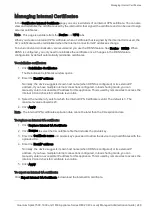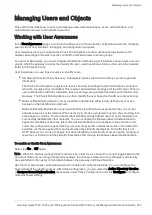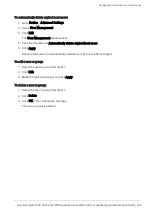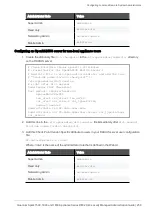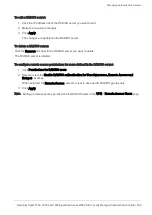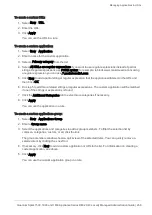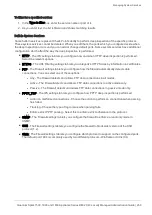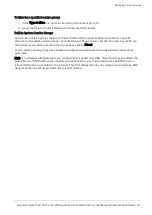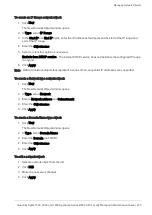
Managing Authentication Servers
Quantum Spark 1500, 1600 and 1800 Appliance Series R80.20.40 Locally Managed Administration Guide | 261
Managing Authentication Servers
In the
Authentication Servers
page you can define and view different authentication servers where users
can define both an external user database and the authentication method for users in that database.
You can define these types of authentication:
n
RADIUS server - Define the details of a primary and secondary RADIUS server. The Quantum Spark
Appliance can connect to these servers and recognize users defined in them and authenticated by
them.
n
Active Directory domain - Define the details of the Active Directory domain that contains your
organization's user information. The User Awareness feature can use these details to provide
seamless recognition of users for logging purposes and user based policy configuration. This can be
used for VPN remote access user authentication. When this is the case, additional configuration is
necessary in the
VPN
>
Remote Access Users
page.
To add a RADIUS server:
1. Click
Configure
.
2. In the Primary tab, enter this information:
n
IP address
- The IP address of the RADIUS server.
n
Port
- The port number through which the RADIUS server communicates with clients. The
default is 1812.
n
Shared secret
- The secret (pre-shared information used for message "encryption") between
the RADIUS server and the Quantum Spark Appliance.
Note - You cannot use these characters in a password or shared secret:
{ } [ ] ` ~ | ‘
" \
Maximum number of characters: 255
Show
- Displays the shared secret.
n
Timeout
(seconds) - A timeout value in seconds for communication with the RADIUS server.
The timeout default is 3 seconds.
3. Repeat step 2 for a Secondary RADIUS server if applicable.
Note
- If you want to remove information you entered in IP address and shared secret, you can click
Clear
.
4. Click
Apply
.
The primary and secondary servers (if defined) are added to the RADIUS section on the page.
RADIUS servers can be used for:
n
Defining a database of users with remote access privileges. Such users are both defined and
authenticated by the RADIUS server.
n
Defining administrators. See the
Users & Objects
>
Administrators
page.


